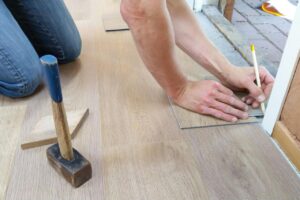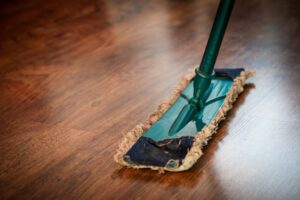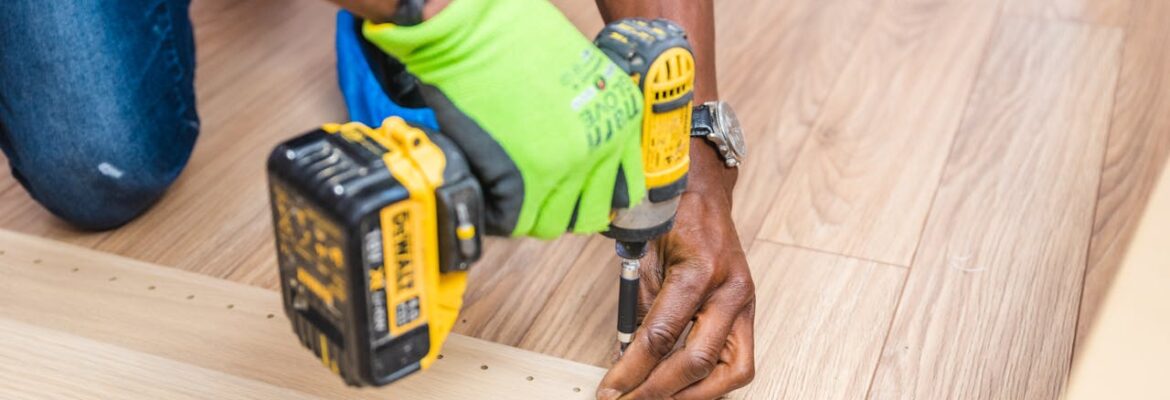Changing your floors can completely refresh your space. If you’re thinking about transitioning from carpet to hardwood flooring, you’re making a smart move for both style and function. Many choose hardwood for its clean look, easy care, and long-term value. But there’s more to the process than just swapping materials. From what happens under the carpet to how hardwood is installed, knowing what to expect can save you time and stress. This guide covers the key steps, so you’re ready for each part of the journey.
Why You Might Choose Hardwood Over Carpet
When transitioning from carpet to hardwood flooring, you’ll find several clear benefits. Hardwood floors last much longer than carpets, which can wear out or stain over time. They are easier to clean since dust and allergens don’t get trapped like they do in carpet fibers. That can make your home feel fresher, especially if anyone in your family has allergies.
Hardwood also adds a classic, stylish look that fits many decorating styles. Plus, it can increase your home’s value, making it a smart choice if you plan to sell later. Overall, hardwood offers a mix of beauty, durability, and health benefits that carpet often can’t match.
What Happens When You Remove Carpets
When you remove a carpet, you’ll uncover padding and tack strips that need careful removal. The subfloor underneath might have damage, such as cracks or uneven spots. These areas often require repair or leveling before hardwood can be installed properly. Skipping this step can cause problems like squeaking or uneven boards later on.
At the same time, the removal process can create dust, debris, and leftover staples or nails. Therefore, before beginning the removal, it makes sense to rent storage so you have space to work and keep your belongings safe.
Once you’ve done that, properly packing items for storage helps protect them from dust, damage, and clutter. Separate what needs to go into storage, gather the right packing supplies, and make sure each item is clean and completely dry to prevent mold or odor. After everything is removed and the area is clean, a smooth subfloor gives your new hardwood the right foundation to last.

How Hardwood Installation Works
Hardwood flooring can be installed in different ways, depending on the type of wood and your home’s needs. The most common methods are nail-down, glue-down, and floating floors. Nail-down means the boards are nailed directly into the subfloor. Glue-down uses a strong adhesive to stick the wood down. Floating floors aren’t attached to the subfloor but rest on top of an underlayment, which can reduce noise and add comfort.
Before installation, the wood needs time to adjust to your home’s temperature and humidity. This step, called acclimation, helps prevent gaps or warping after the floor is laid. Installation usually takes a few days, depending on the room size and the method used. Professional installers often start by prepping the subfloor, then carefully place each board for a tight, smooth finish that can last for decades.
Common Challenges You Might Face When Transitioning from Carpet to Hardwood Flooring
One challenge is dealing with an uneven or damaged subfloor. Carpet can hide cracks, dips, or water damage underneath. These issues need fixing before hardwood goes down, which can add time and cost to your project.
Hardwood floors can be noisier than carpet, especially if the subfloor isn’t perfectly smooth. Creaking or hollow sounds are common on older floors. Using a proper underlayment or padding helps reduce noise and makes walking quieter.
Because hardwood sits higher than carpet, you may need to adjust baseboards and door trims. Sometimes, trimming or replacing these is necessary to make everything fit neatly and avoid gaps along the edges.
Installation also means some disruption. The process creates dust and noise and can take several days. You might want to plan to be out of the house or at least move around less while work is happening.

How to Prepare Your Home and Yourself
Before the installation starts, it’s important to clear the room completely. Move all furniture, rugs, and personal items out of the way. That makes the job faster and protects your belongings from dust or damage. Also, check for loose nails or staples left behind after the carpet removal, as these can cause problems during installation.
You should plan for pets and children to stay somewhere safe while work is happening. The process can be noisy and dusty, which isn’t comfortable for them. Keeping windows open or running fans can help with ventilation and reduce dust buildup. Preparing your home well can make the whole transition smoother and less stressful for everyone.
Benefits You’ll Notice After the Switch
Switching from carpet to hardwood brings many noticeable benefits. Once your new floors are in, you’ll enjoy these key advantages:
- Cleaner and fresher rooms: Hardwood doesn’t trap dust, dirt, or pet hair like carpet does.
- Easier to clean: Sweeping and mopping hardwood is quicker and more effective than vacuuming carpet.
- A warm, natural feel: Hardwood adds a cozy, inviting touch underfoot.
- Long-lasting beauty: With proper care, hardwood can stay beautiful for decades.
- Increased home value: Hardwood floors often boost your property’s appeal to buyers.
These benefits can make a big difference in your daily life and your home’s overall atmosphere. Hardwood offers style and function that lasts.

Tips to Keep Your Hardwood Looking Great
Once your hardwood floor is installed, taking care of it helps keep it looking fresh and beautiful. These simple tips can extend the life of your floors and protect your investment:
- Use soft pads under furniture to prevent scratches when moving chairs or tables.
- Clean regularly with hardwood-safe cleaners instead of harsh chemicals.
- Avoid using too much water when mopping, as excess moisture can damage the wood.
- Place rugs or runners in high-traffic areas to reduce wear and tear.
- Keep pet nails trimmed to avoid scratches and dents.
Following these easy steps will keep your floors looking great for years to come.
Moving Forward with Confidence
Transitioning from carpet to hardwood flooring is more than a simple swap — it’s an upgrade that changes how you live in your space. Once your new floors are down, you’ll notice the difference every day in how your home looks and feels. While the process has its challenges, the results make it worth the effort. With a little preparation and patience, you’re not just installing wood; you’re creating a foundation for new memories, comfort, and style that lasts. Your home is ready for a fresh start, and your floors are leading the way.
Photos used:
https://www.pexels.com/photo/person-holding-dewalt-cordless-hand-drill-1249610/
https://www.pexels.com/photo/couple-moving-sofa-in-room-7217785/

